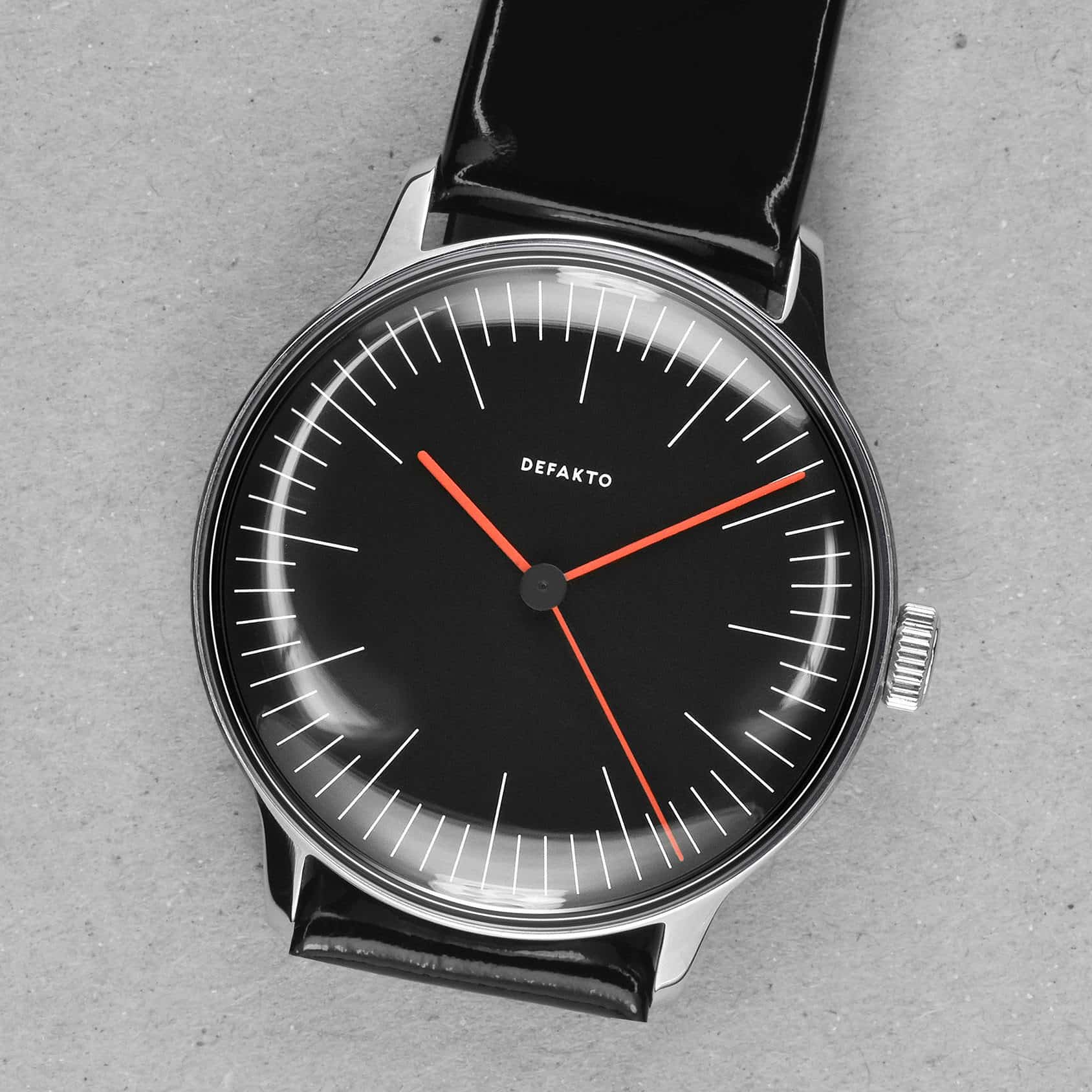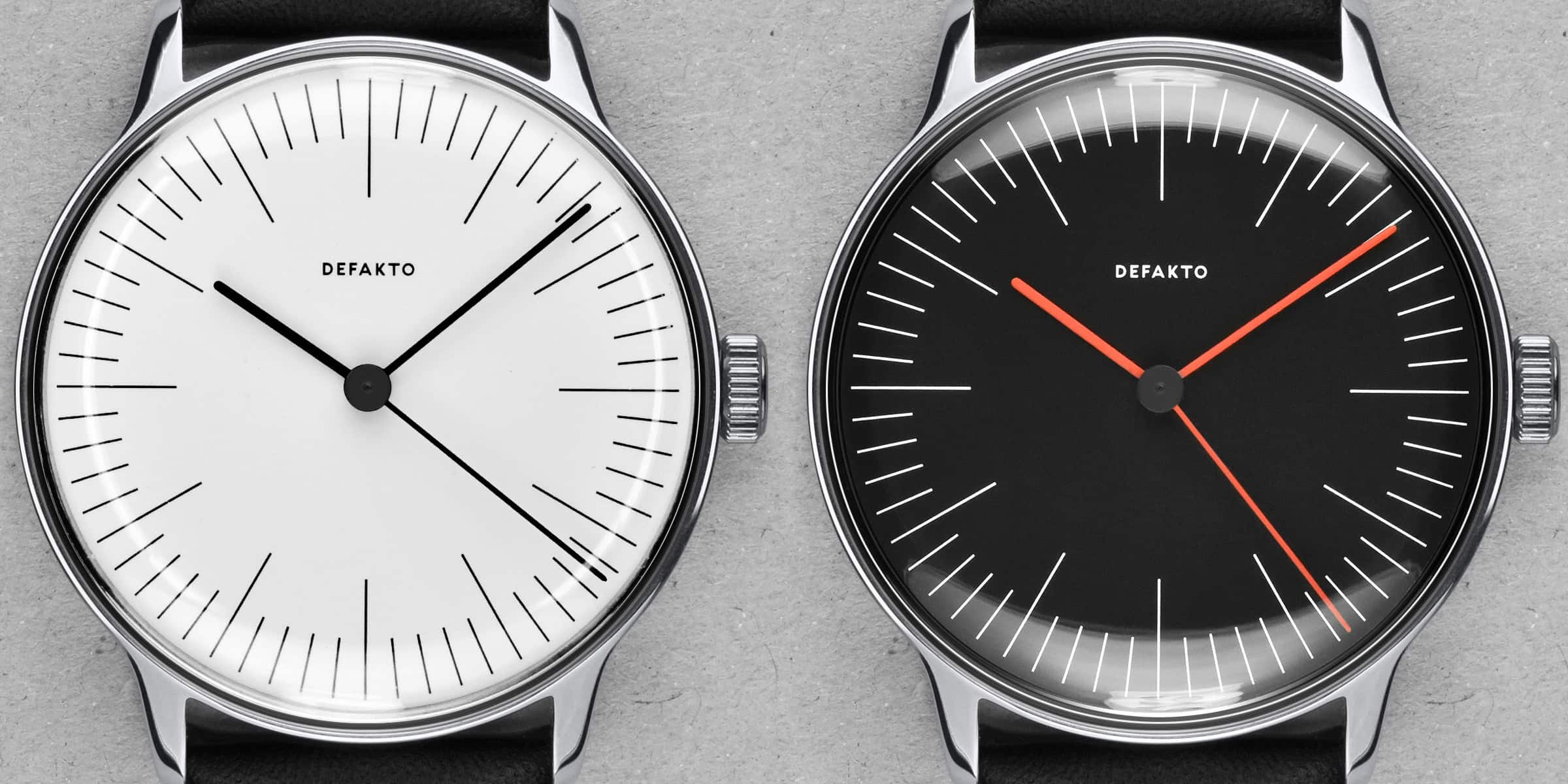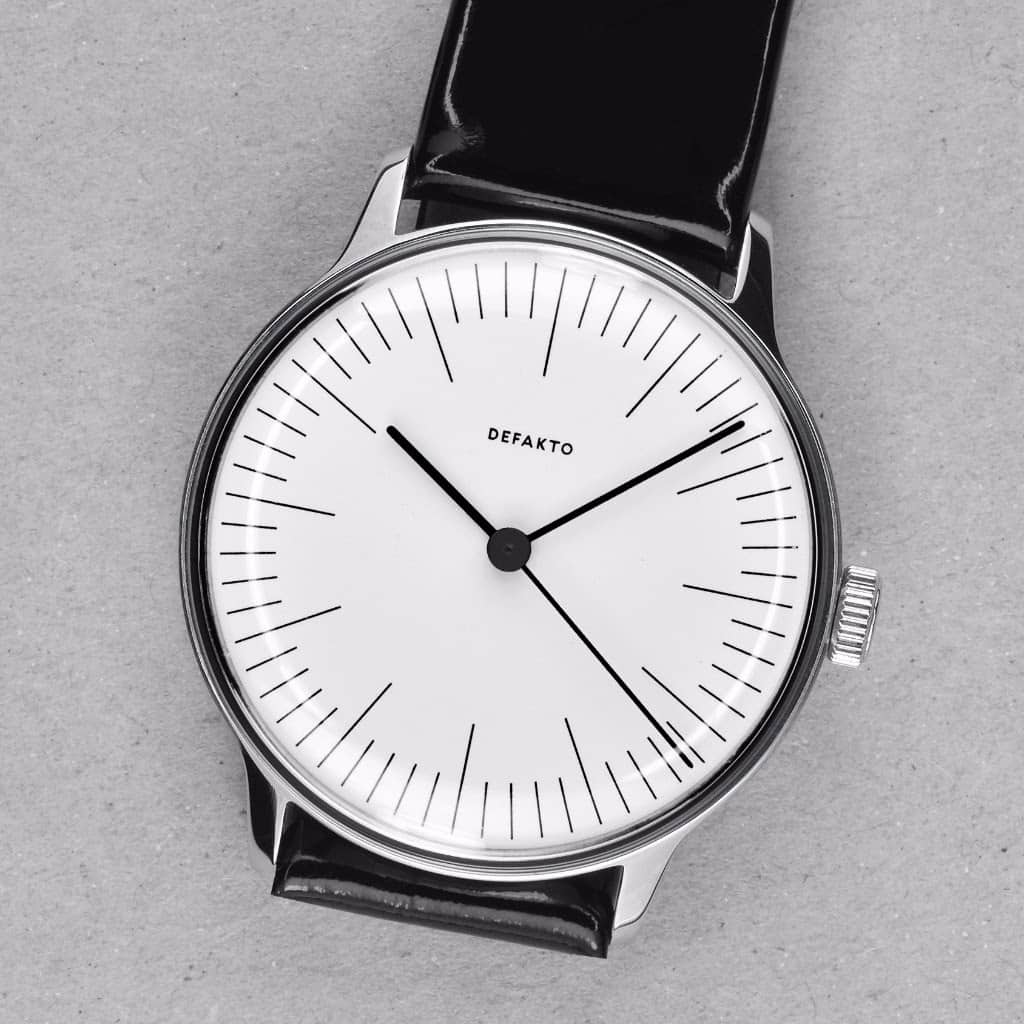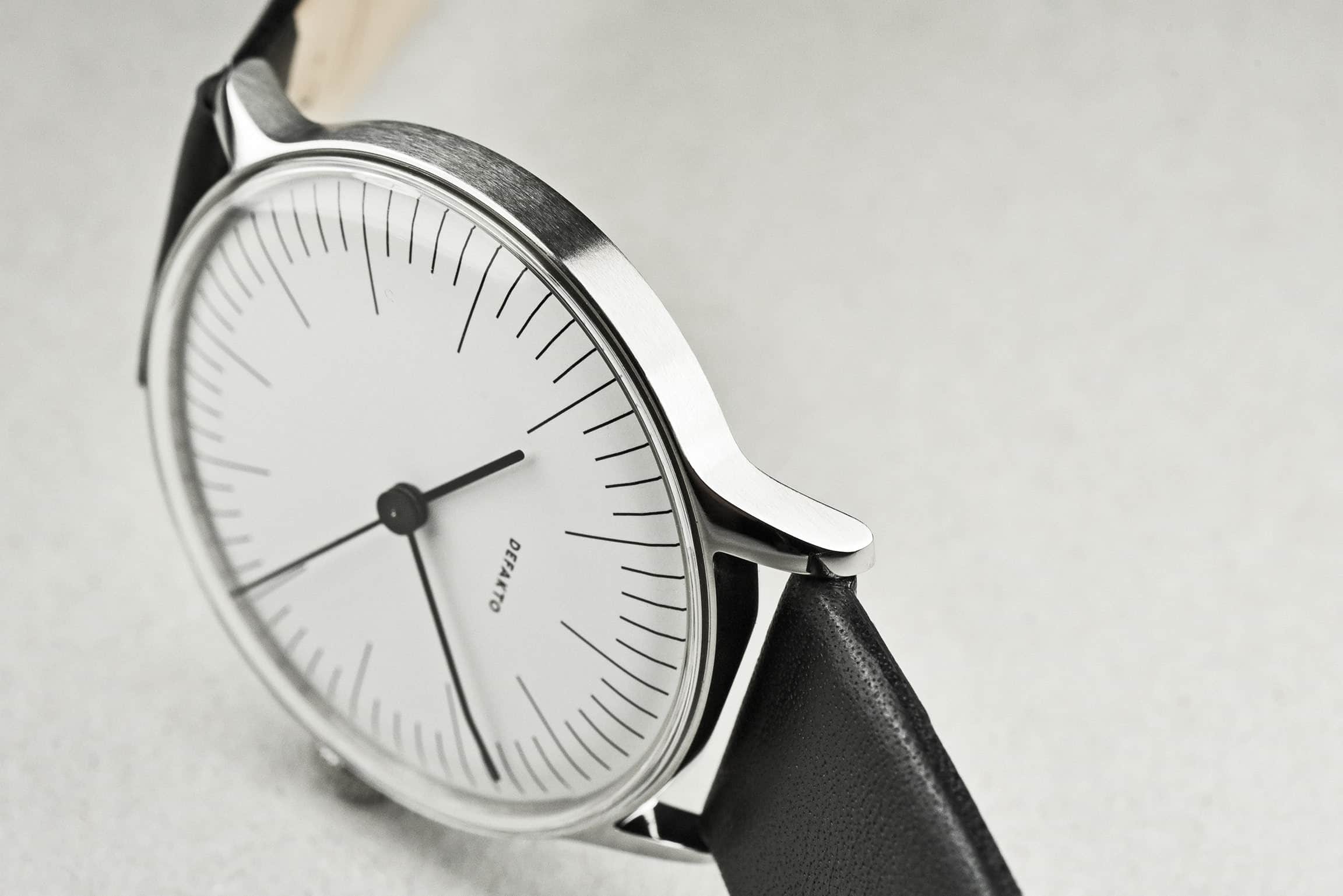Minimalism in watchmaking is like the harmonica: easy to pick up, but extremely difficult to master. With that in mind, while the trend of minimal or “Bauhaus-inspired” watches continues to grow, the ones that really perfect the style naturally rise to the top. German brand Defakto have proven themselves to be a prime example of this, with a robust lineup of pared-down designs with just enough distinct flavor to set them apart. Their newest watch, the Vektor, continues this trend in the subtlest way yet. In terms of case design, the Defakto Vektor takes the same attitude as a sashimi chef—less is more, but the preparation and quality of the ingredients is everything. The lugs are wide-set, gently curving, and polished to a brilliant sheen on top, while the dial takes up the entire 39mm diameter of the case leaving it effectively without a bezel. From the side, this polishing is contrasted by a strong, even brushing, which is in turn broken up by the polished pillbox crown at three o’clock. This may all seem rather straightforward, but the case side has a trick up its sleeve—its thinness. From the domed plexiglass to the open case back offering a view of the movement within, the Vektor measures just 9.8mm thick.
In terms of case design, the Defakto Vektor takes the same attitude as a sashimi chef—less is more, but the preparation and quality of the ingredients is everything. The lugs are wide-set, gently curving, and polished to a brilliant sheen on top, while the dial takes up the entire 39mm diameter of the case leaving it effectively without a bezel. From the side, this polishing is contrasted by a strong, even brushing, which is in turn broken up by the polished pillbox crown at three o’clock. This may all seem rather straightforward, but the case side has a trick up its sleeve—its thinness. From the domed plexiglass to the open case back offering a view of the movement within, the Vektor measures just 9.8mm thick.









 Featured Videos
Featured Videos











